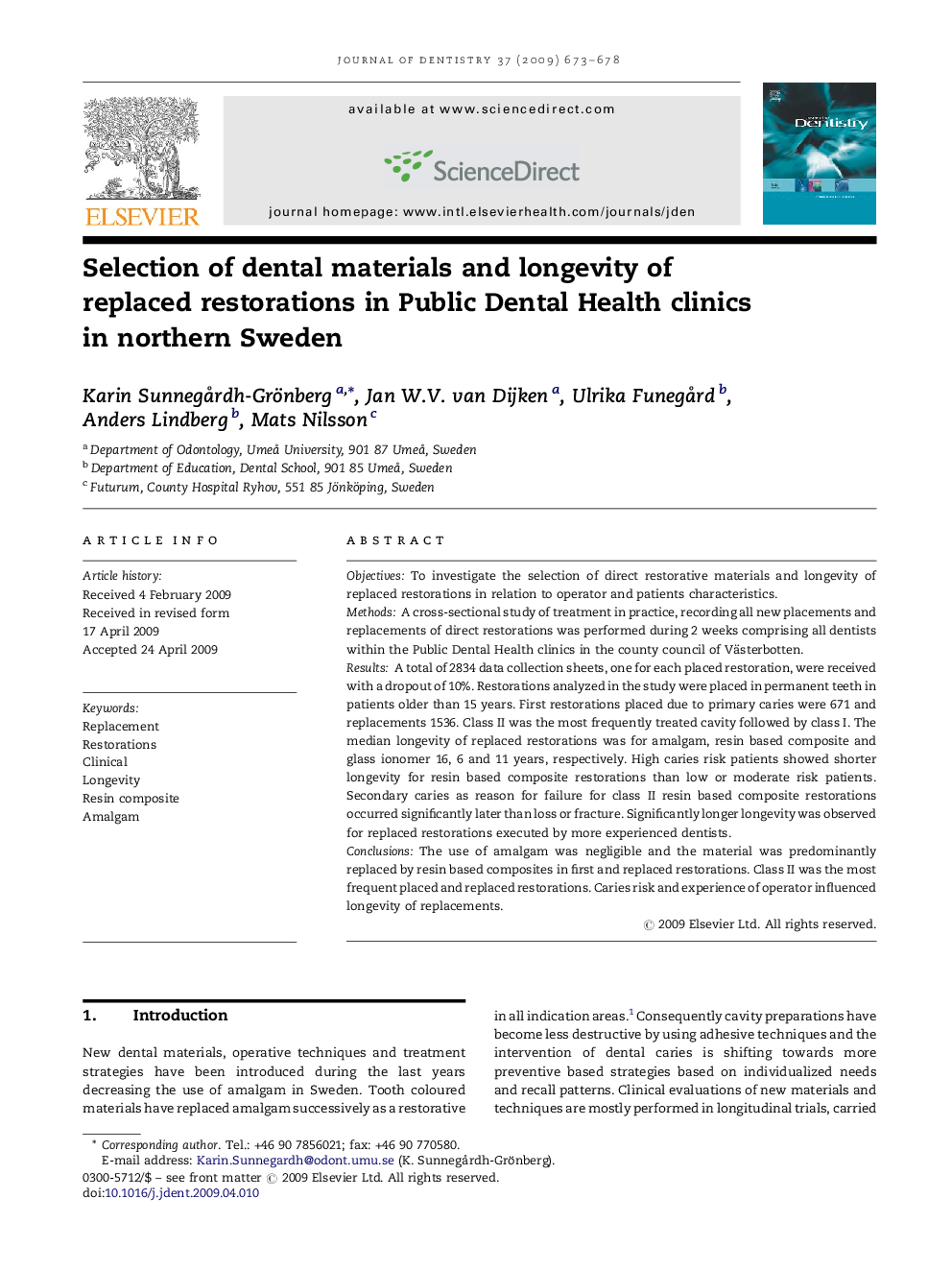| Article ID | Journal | Published Year | Pages | File Type |
|---|---|---|---|---|
| 3145689 | Journal of Dentistry | 2009 | 6 Pages |
ObjectivesTo investigate the selection of direct restorative materials and longevity of replaced restorations in relation to operator and patients characteristics.MethodsA cross-sectional study of treatment in practice, recording all new placements and replacements of direct restorations was performed during 2 weeks comprising all dentists within the Public Dental Health clinics in the county council of Västerbotten.ResultsA total of 2834 data collection sheets, one for each placed restoration, were received with a dropout of 10%. Restorations analyzed in the study were placed in permanent teeth in patients older than 15 years. First restorations placed due to primary caries were 671 and replacements 1536. Class II was the most frequently treated cavity followed by class I. The median longevity of replaced restorations was for amalgam, resin based composite and glass ionomer 16, 6 and 11 years, respectively. High caries risk patients showed shorter longevity for resin based composite restorations than low or moderate risk patients. Secondary caries as reason for failure for class II resin based composite restorations occurred significantly later than loss or fracture. Significantly longer longevity was observed for replaced restorations executed by more experienced dentists.ConclusionsThe use of amalgam was negligible and the material was predominantly replaced by resin based composites in first and replaced restorations. Class II was the most frequent placed and replaced restorations. Caries risk and experience of operator influenced longevity of replacements.
